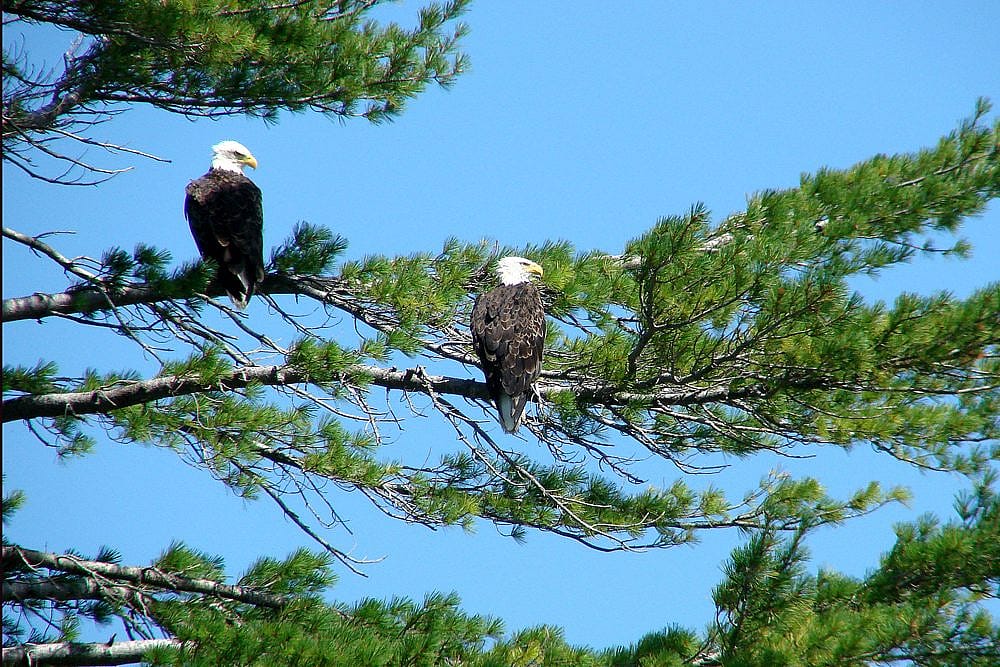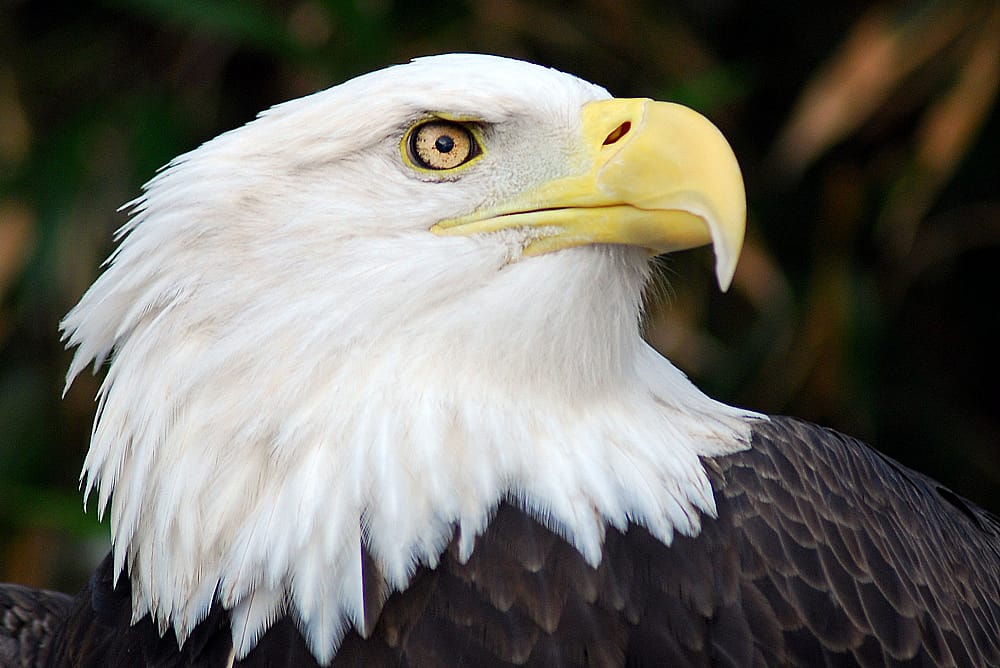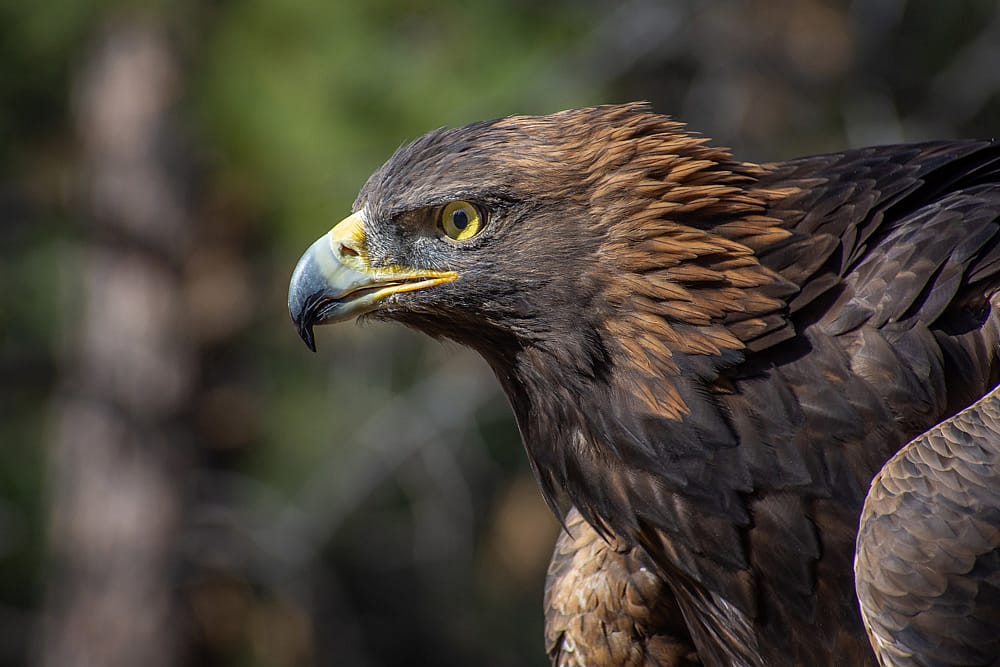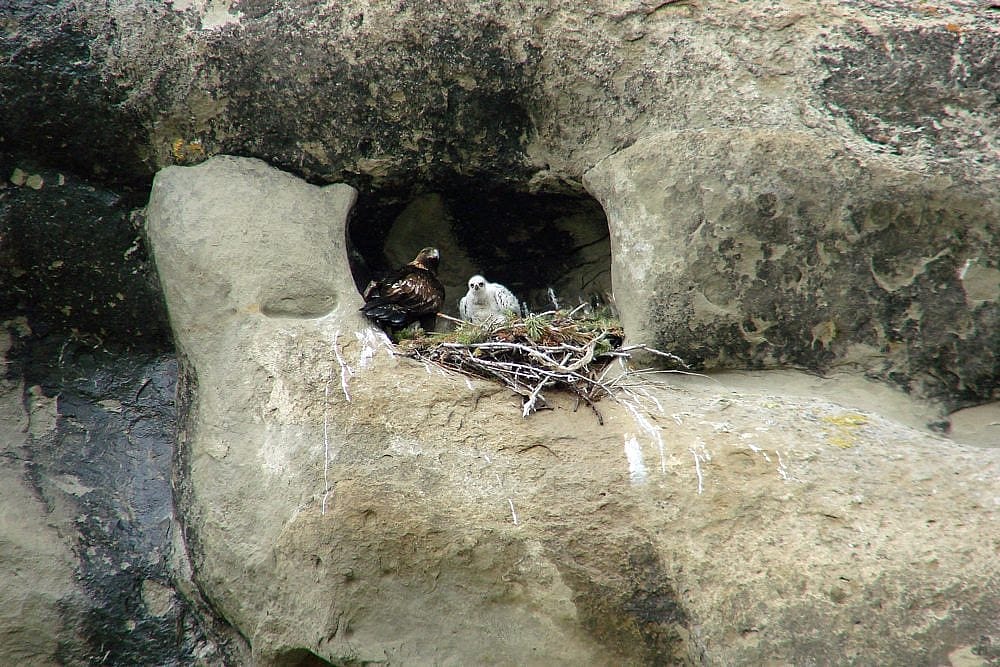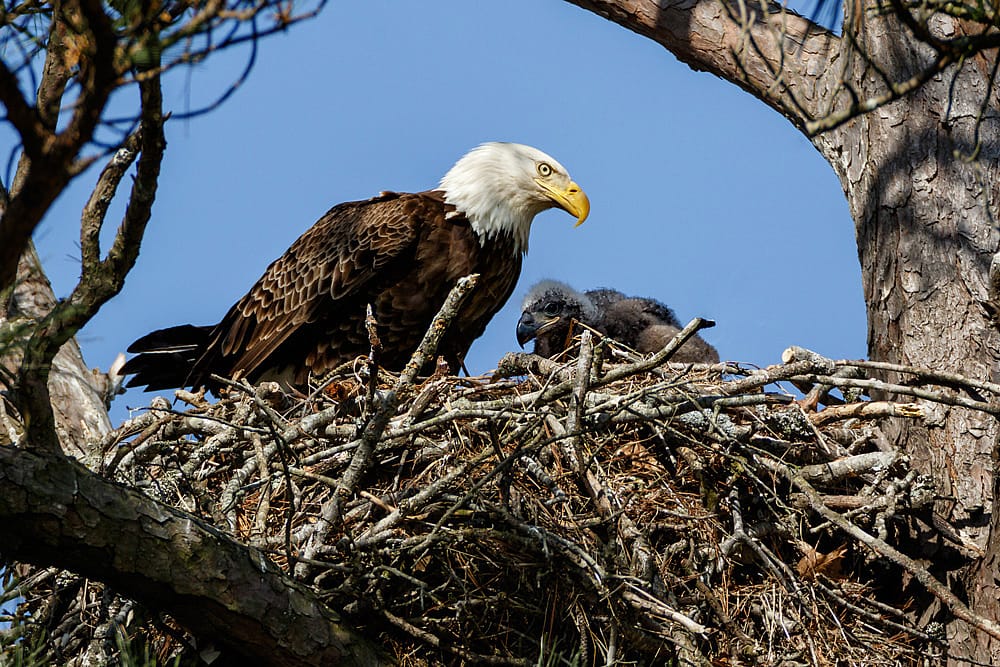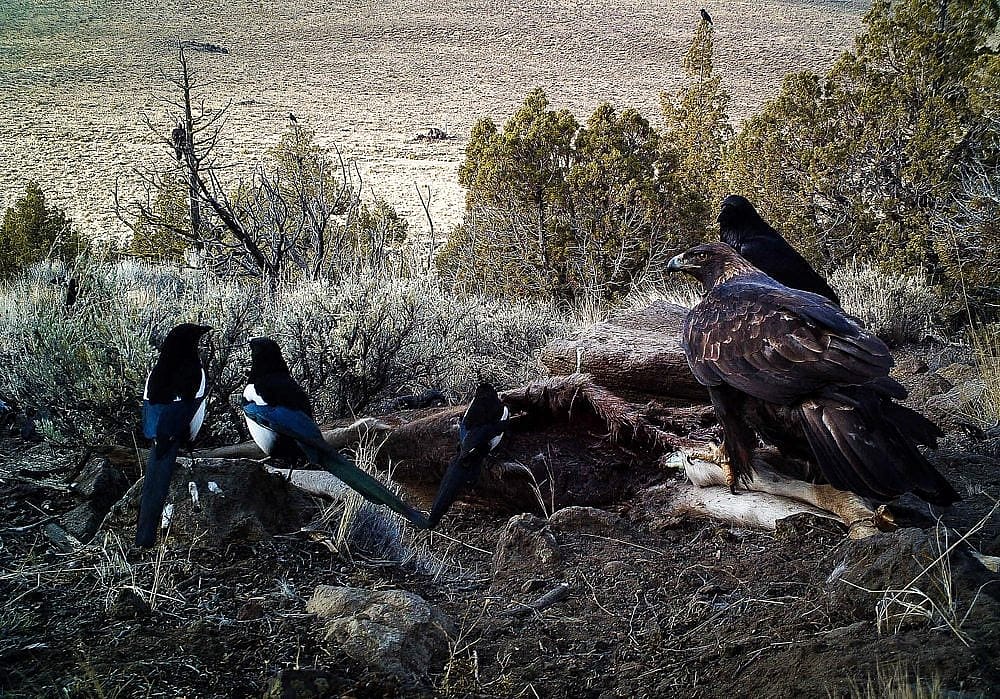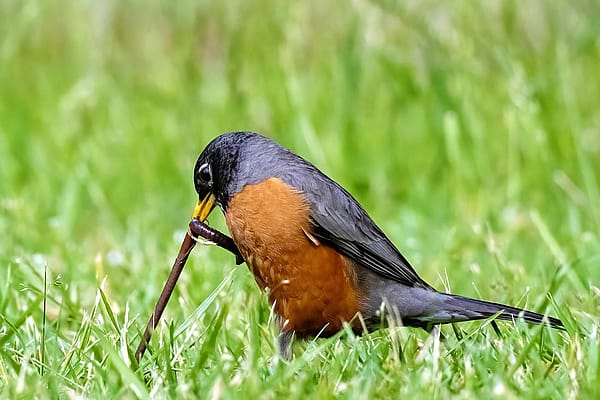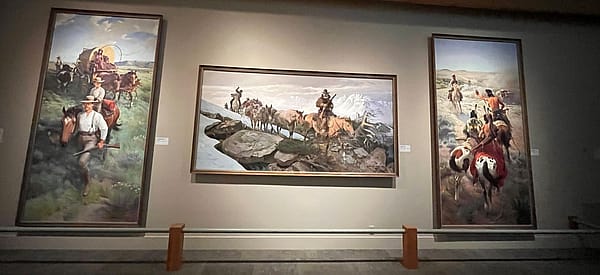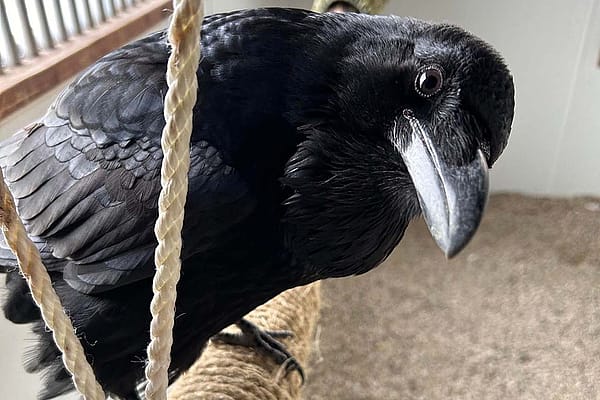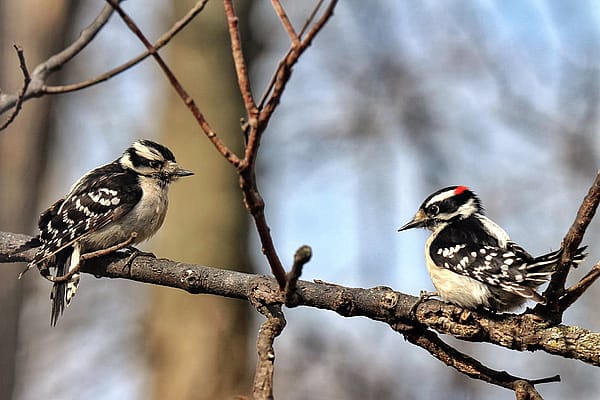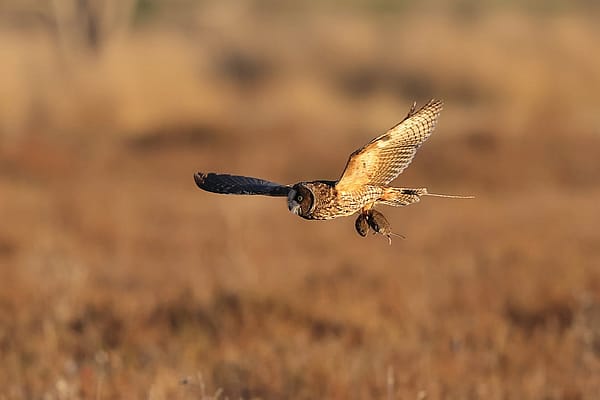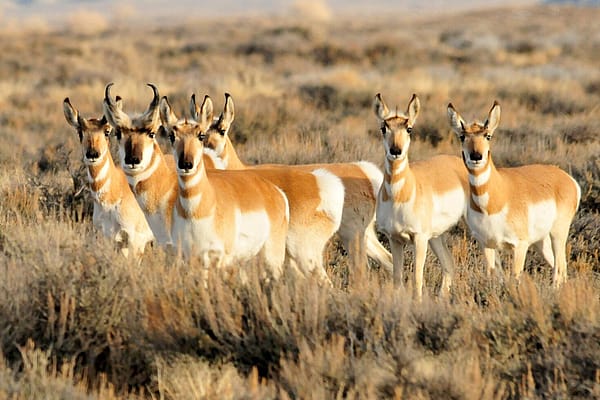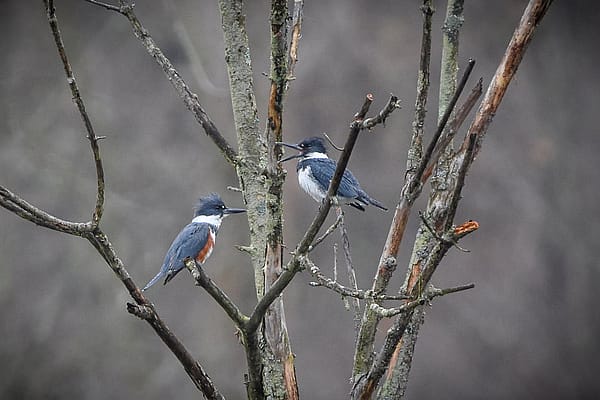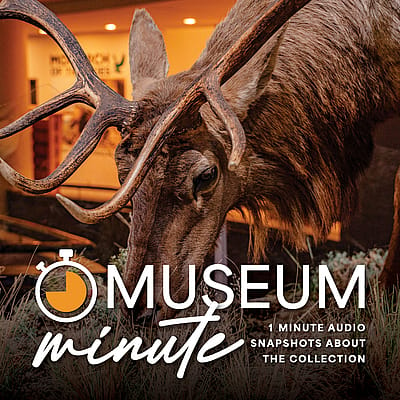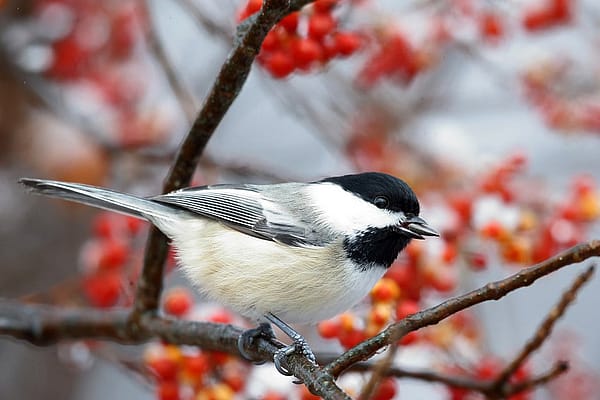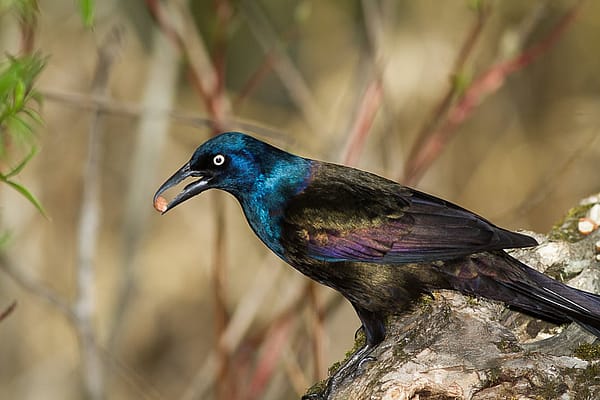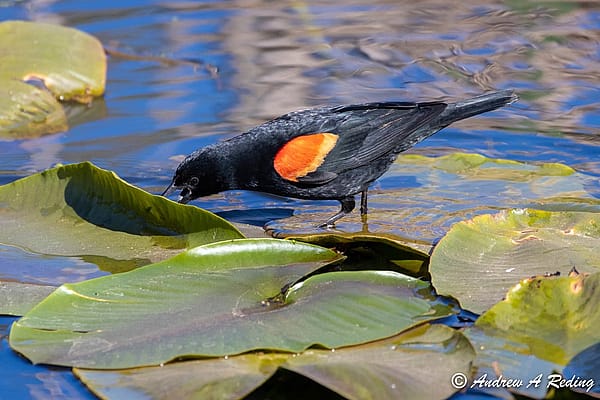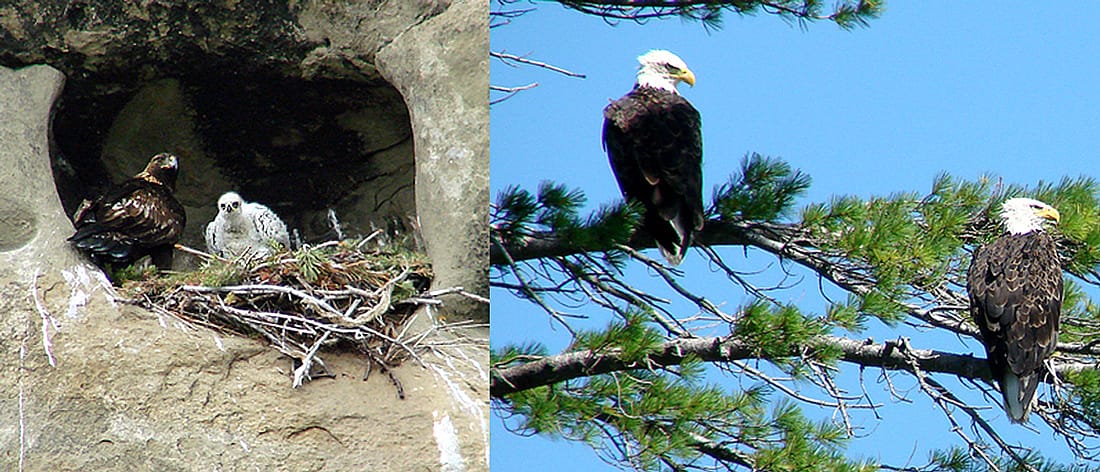
How Golden and Bald Eagles are Different
Updated April 25, 2024
The Draper Museum Raptor Experience is privileged to house two eagles, a Golden and a Bald. Most people believe these two birds are closely related, but surprisingly this isn’t the case. Bald Eagles (Haliaeetus leucocephalus) belong to a group called “fishing eagles,” and are more closely related to kites. Golden Eagles (Aquila chrysaetos) are more closely related to hawks called “Buteos,” such as red-tailed hawks.
Distinguishing characteristics
Adult Golden and Bald Eagles have distinguishing characteristics in their coloring making it easy to identify the species. Both are large birds with dark brown bodies. The adult Bald Eagle has a noticeable white head and tail while the Golden Eagle has a brown head with “golden” feathers on the back of their necks. The adult Bald Eagle has a large, yellow beak, while the Golden has a slightly smaller, black beak.
Golden Eagles are referred to as “booted eagles,” since they are feathered all the way down their legs to the tops of their feet, while the Bald Eagle’s feathers stop a few inches from the tops of their feet.
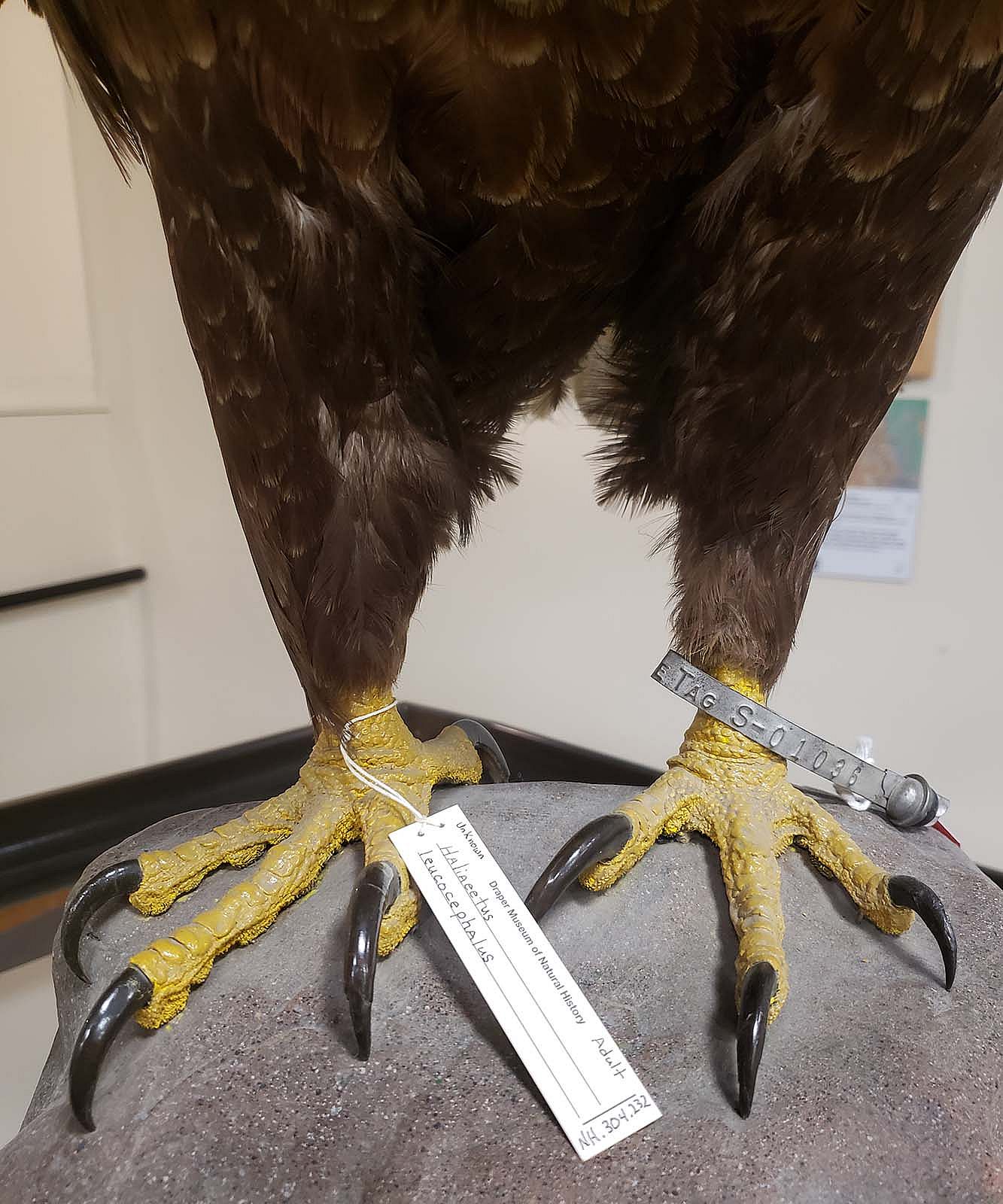
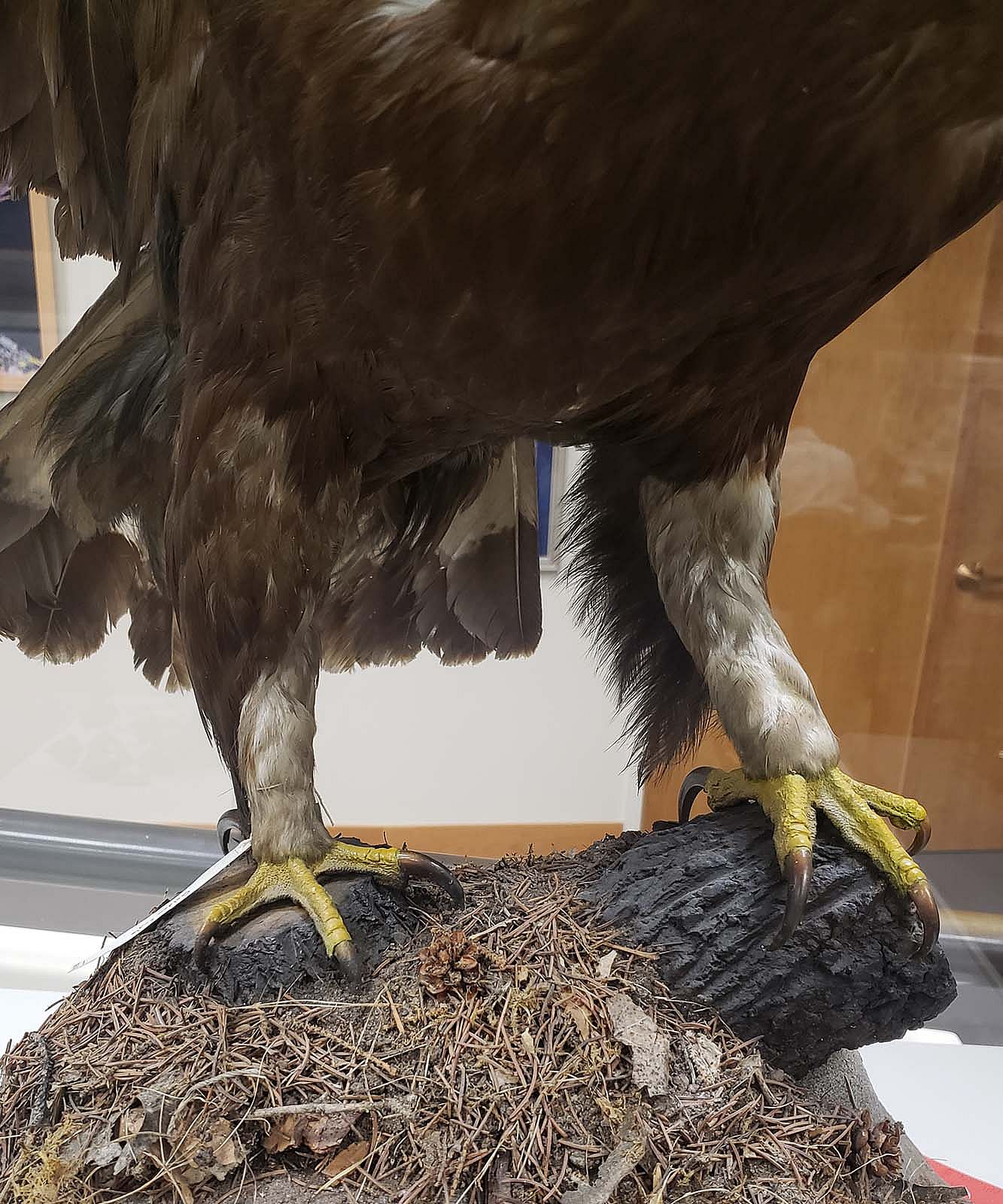
Recognizing the difference between immature eagles
Immature birds are more difficult to distinguish. With a black beak and dark brown head and tail, immature Bald Eagles are often confused with Golden Eagles. Fledgling (just learning to fly) Goldens have a solid white patch underneath each wing and the base of the tail has a white section which ranges from very broad to thinner as the eagle ages. Rather than solid white patches, the fledgling Bald Eagles look more like they are splattered with white paint. Their head and tail gradually show more and more white as they age.
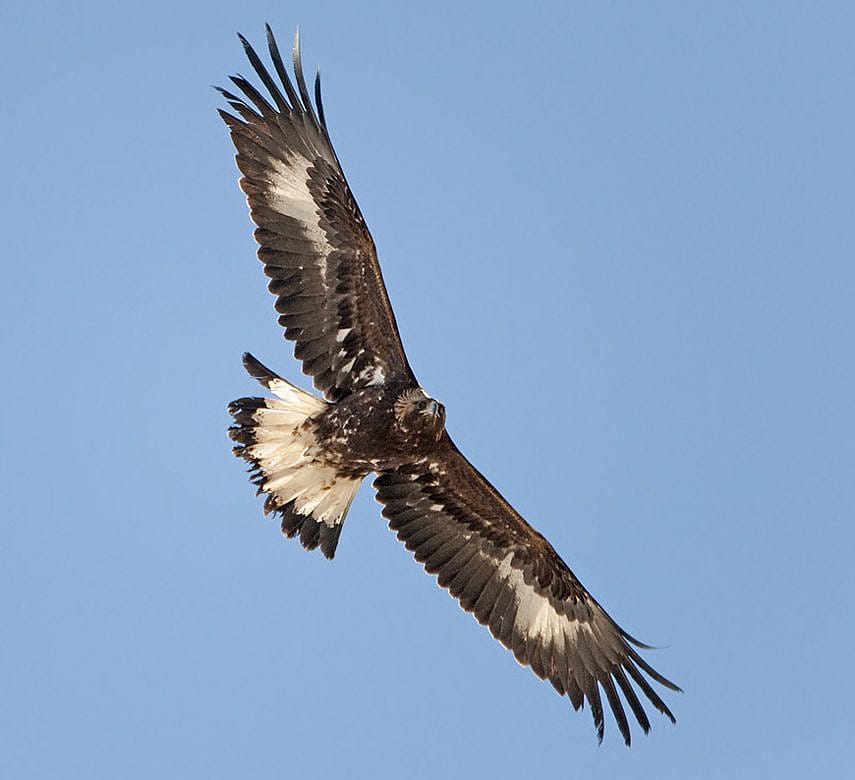
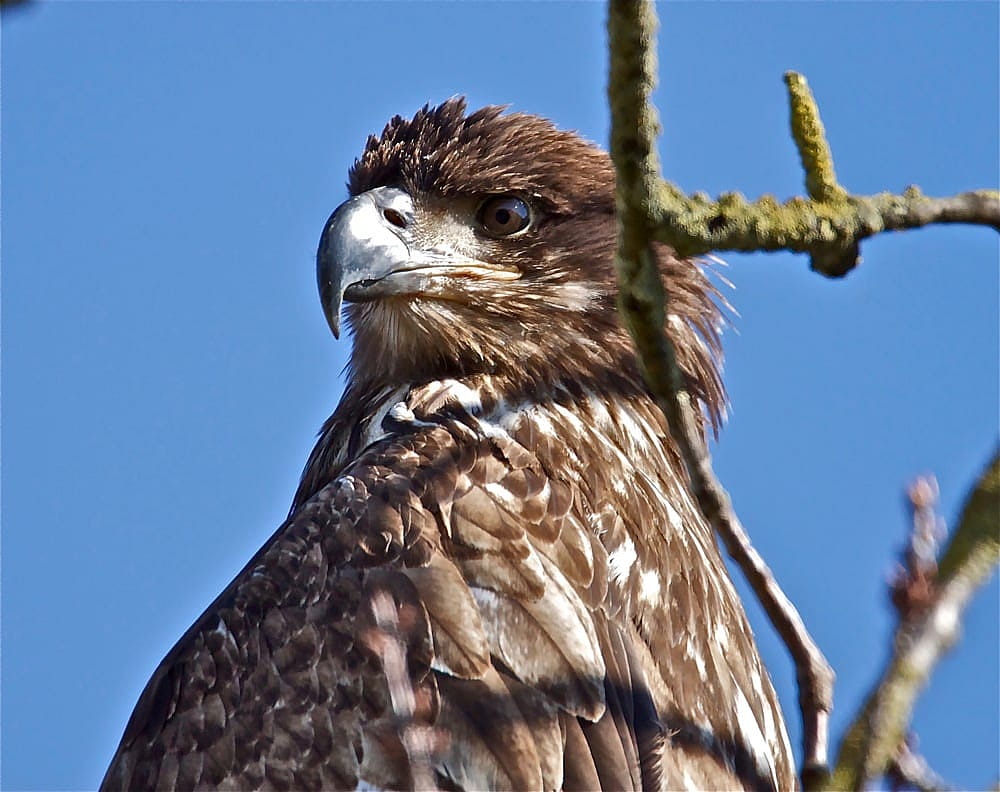
Chosen as our national symbol, the Bald Eagle’s image is found on the Great Seal of the United States, as well as on some state seals, gold and silver coins, paper money, and many U.S. stamps. Currency has been issued with a variety of eagle shapes and positions. Some people have complained that many of these illustrations show the Golden Eagle with its fully feathered legs, rather than the Bald Eagle.
National symbols
Although the Bald Eagle is honored as our national symbol, the Golden Eagle is the national symbol of Mexico, Albania, Germany, Austria, and Kazakhstan – making it the most common national animal in the world.
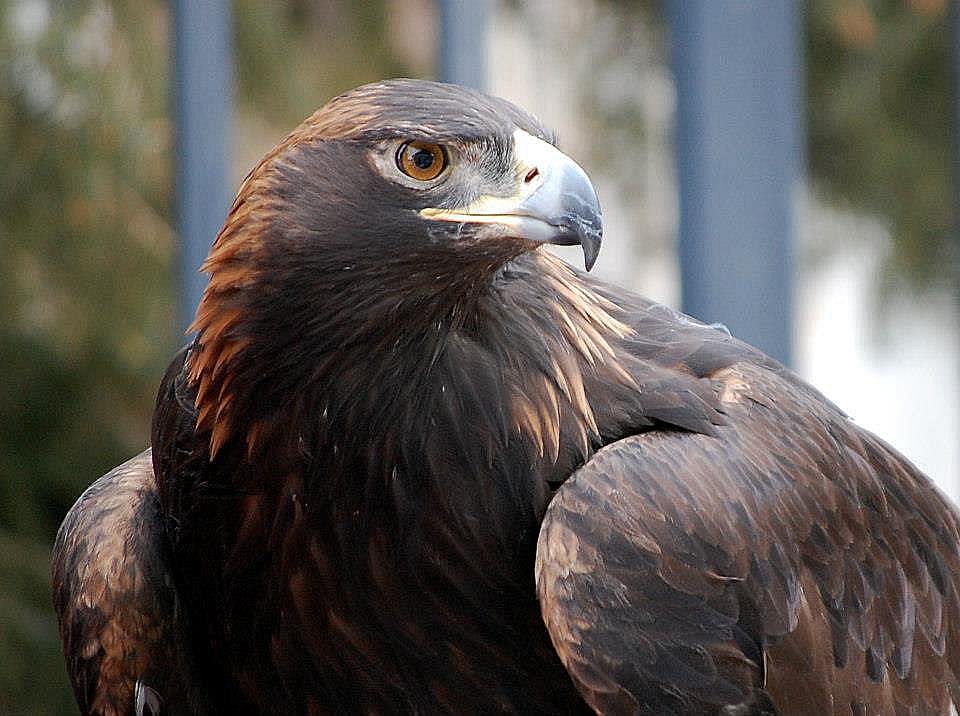
Named after the golden color on the back of the eagle’s head and nape, it is easy to see how the Golden Eagle received its common name. Looking at the Bald Eagle, it is more difficult to understand its name source. Bald is derived from the Middle English word “balde,” meaning shining white. The Bald Eagle generally does not have a completely white head and tail until they are five or six years old.
Bald Eagle Jade through the years
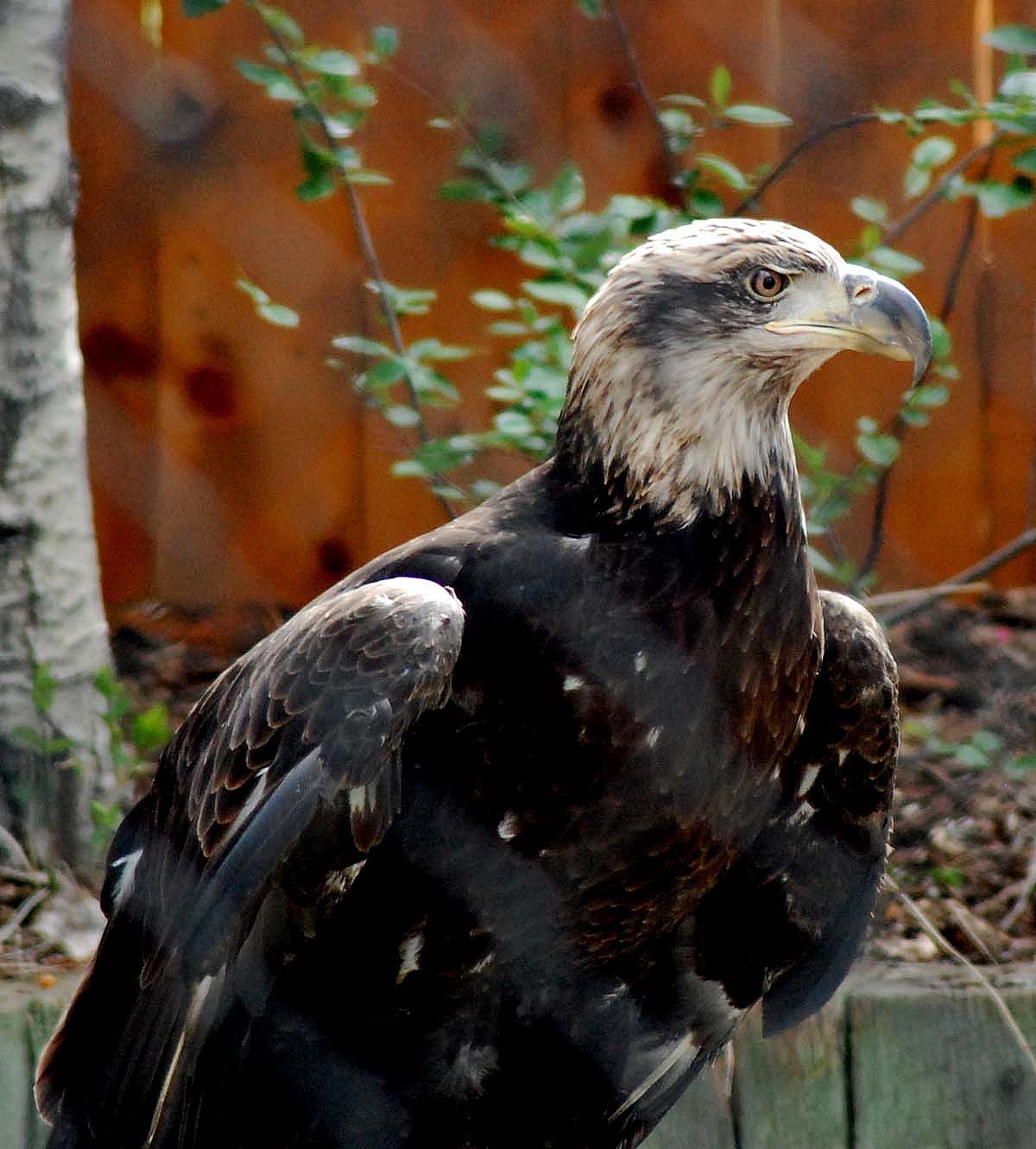
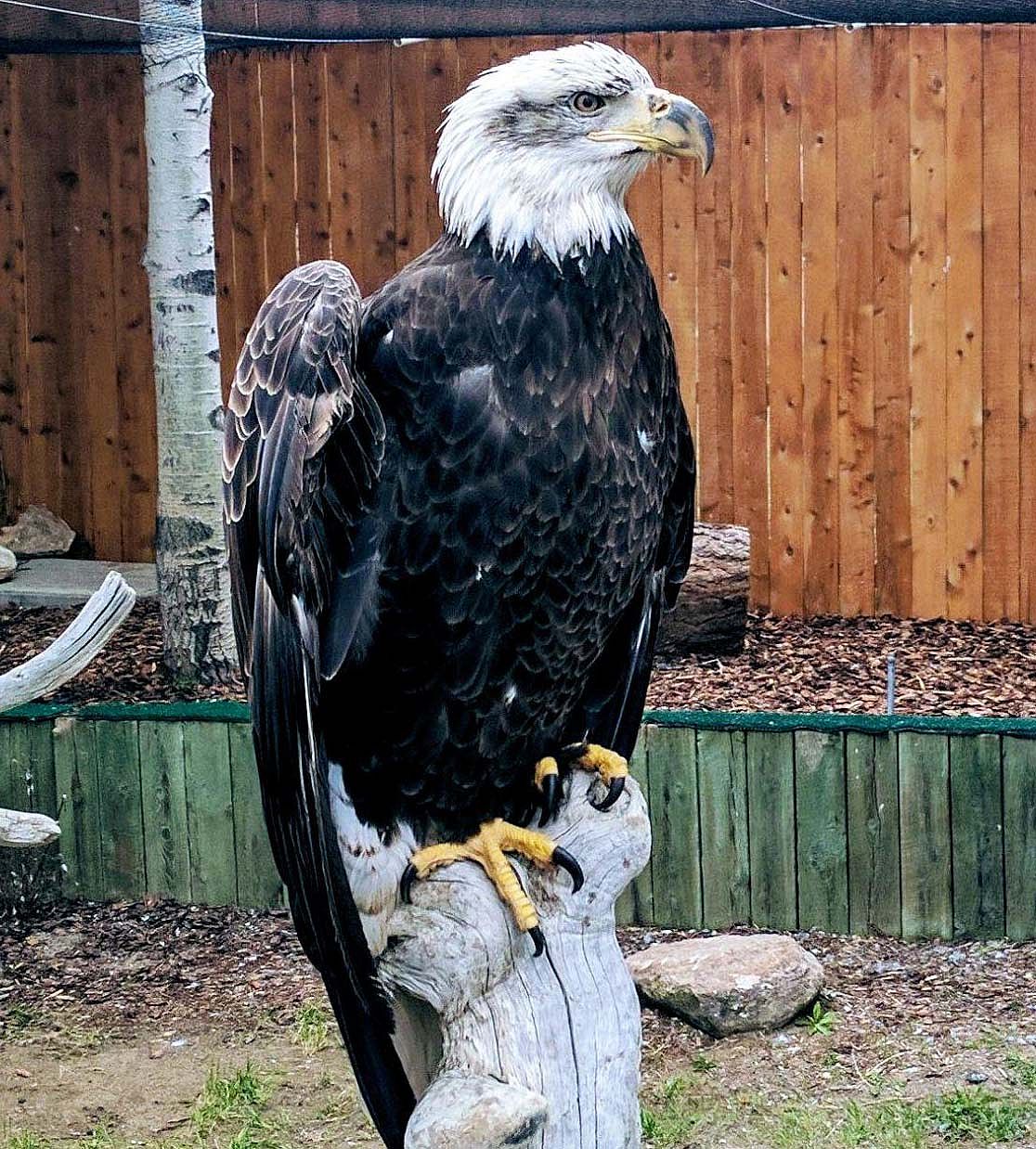
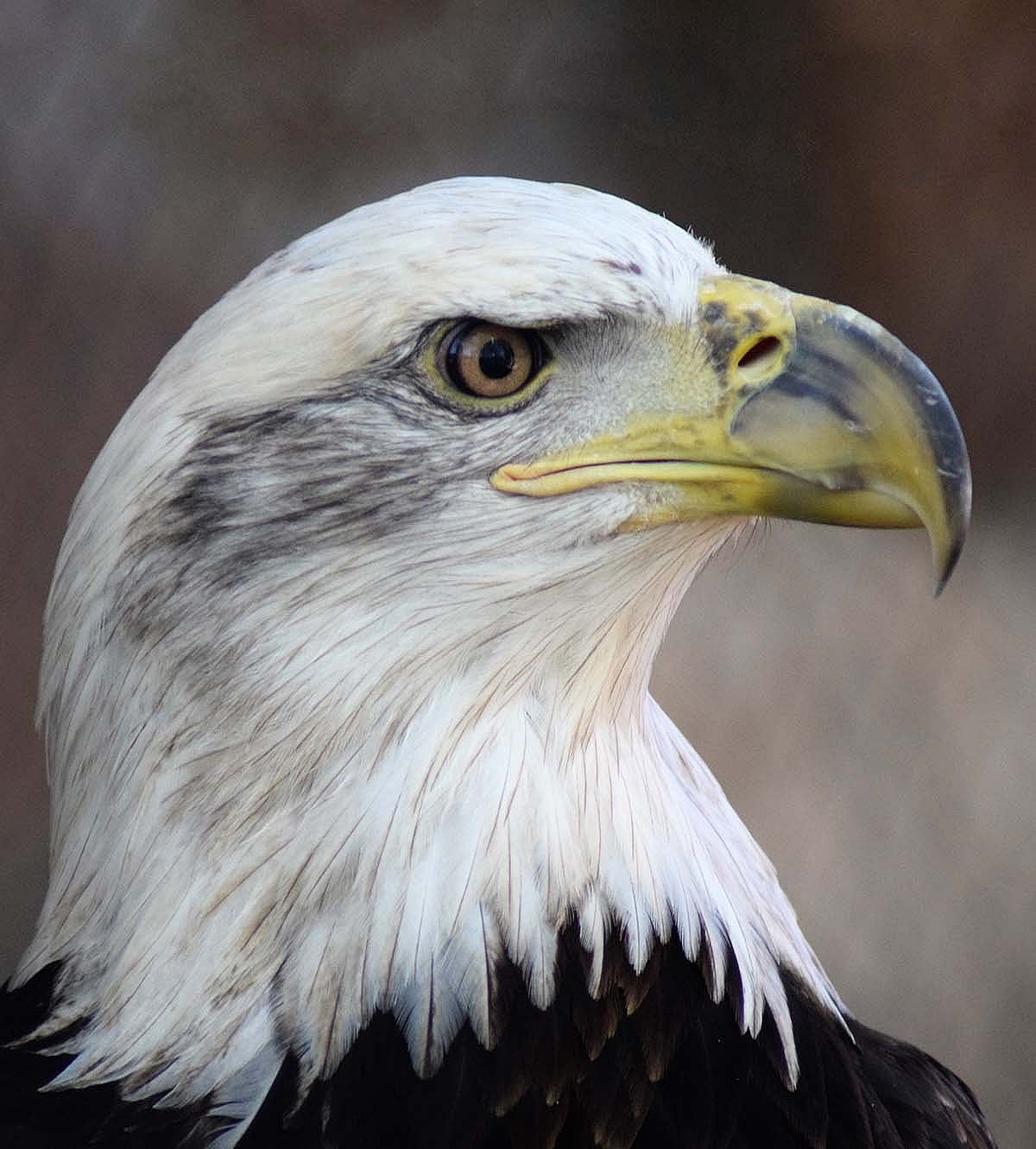
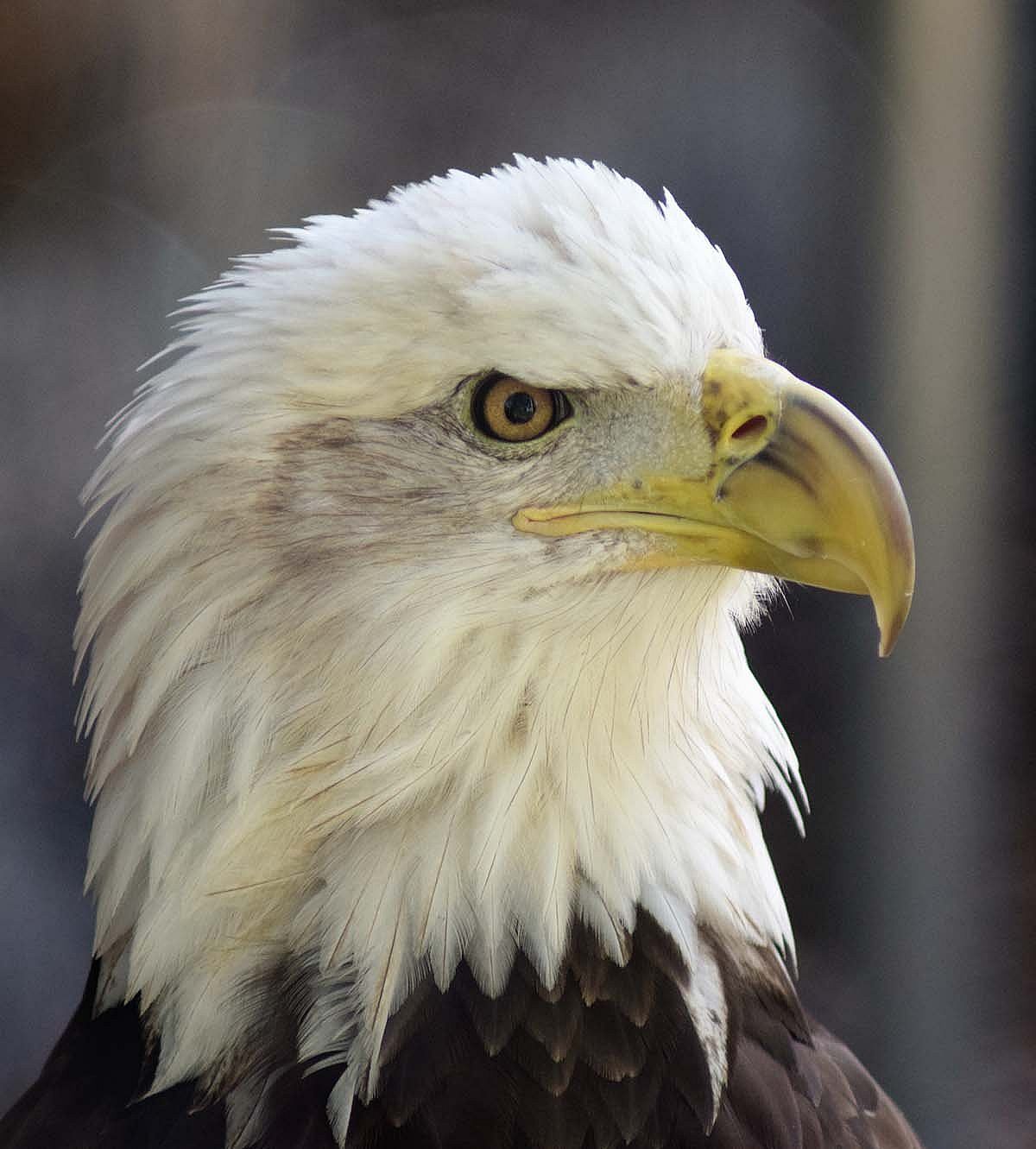
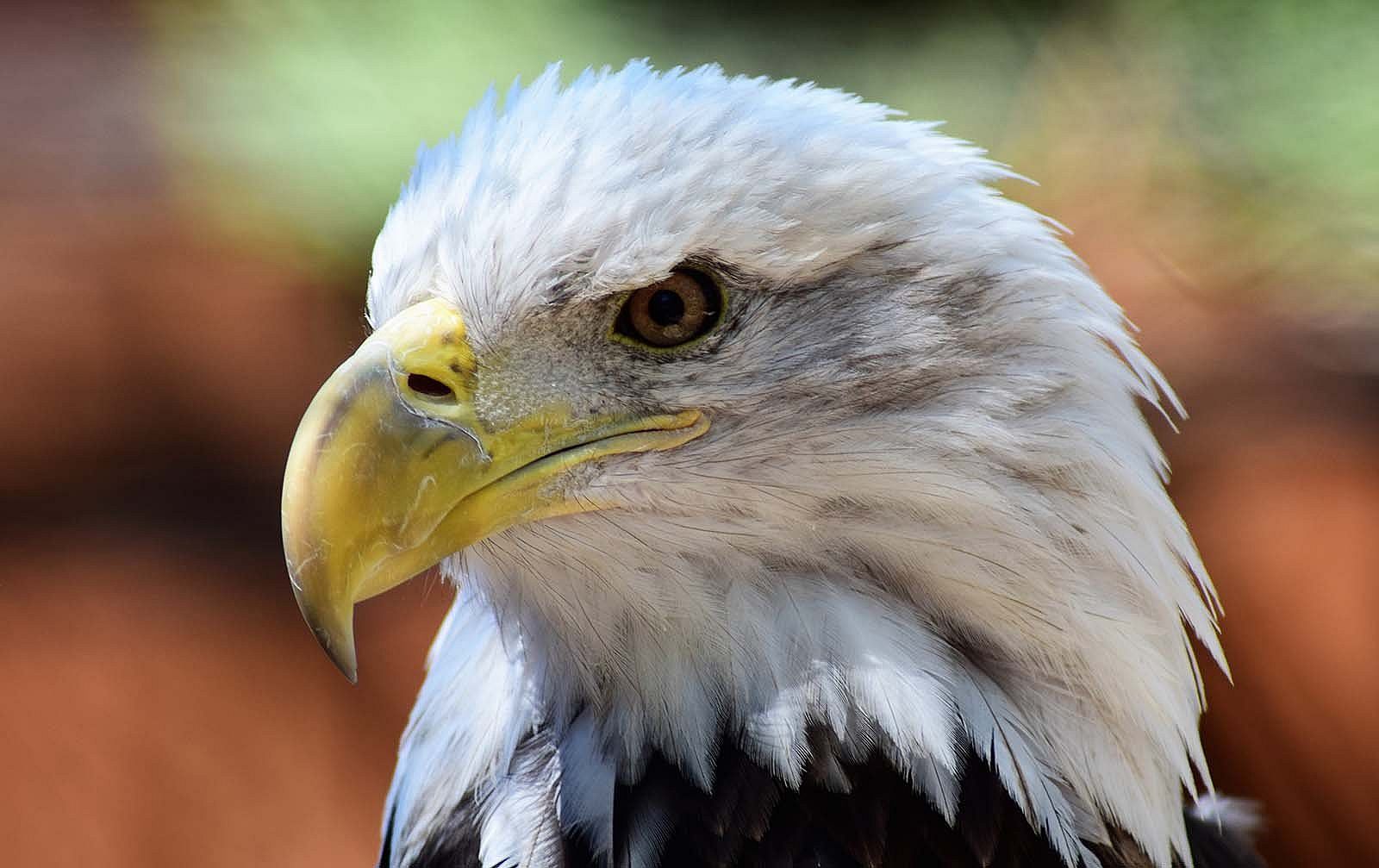
Where do they live?
The Golden Eagle ranges across the Northern Hemisphere, including North America, Europe, and parts of Africa and Asia. In the United States the Golden Eagle resides mainly west of the Mississippi River. They prefer open, rugged country of plains, mountains, deserts, and plateaus, especially in areas where cliffs offer good nesting sites. They also can be found in areas where forest alternates with open space. Golden Eagles build large stick nests on cliff ledges, often with an overhang. Occasionally a Golden Eagle will use a tall tree where cliff sites are unavailable. Golden Eagles tend to avoid nesting in areas with a lot of human activity.
The Bald Eagle resides in a much smaller area of the world, found mainly in Canada, the United States, and northern Mexico. They typically prefer to build large stick nests in tall trees along bodies of water, though they can be seen in most types of habitats. They will sometimes use cliffs when trees are not available. Bald eagles are not as bothered by human activity as golden eagles.
Eagles and prey
Although Bald and Golden eagles have a prey preference, there is a lot of overlap in what they eat. Fish are the preferred food item for Bald Eagles, however they will also prey on waterfowl, prairie dogs, rabbits, and will happily consume a large amount of carrion when available. Bald eagles will also practice “kleptoparasitism” by harassing Ospreys (Pandion haliaetus) or other birds in order to steal prey from them. Below is a video of a bald eagle catching a fishing.
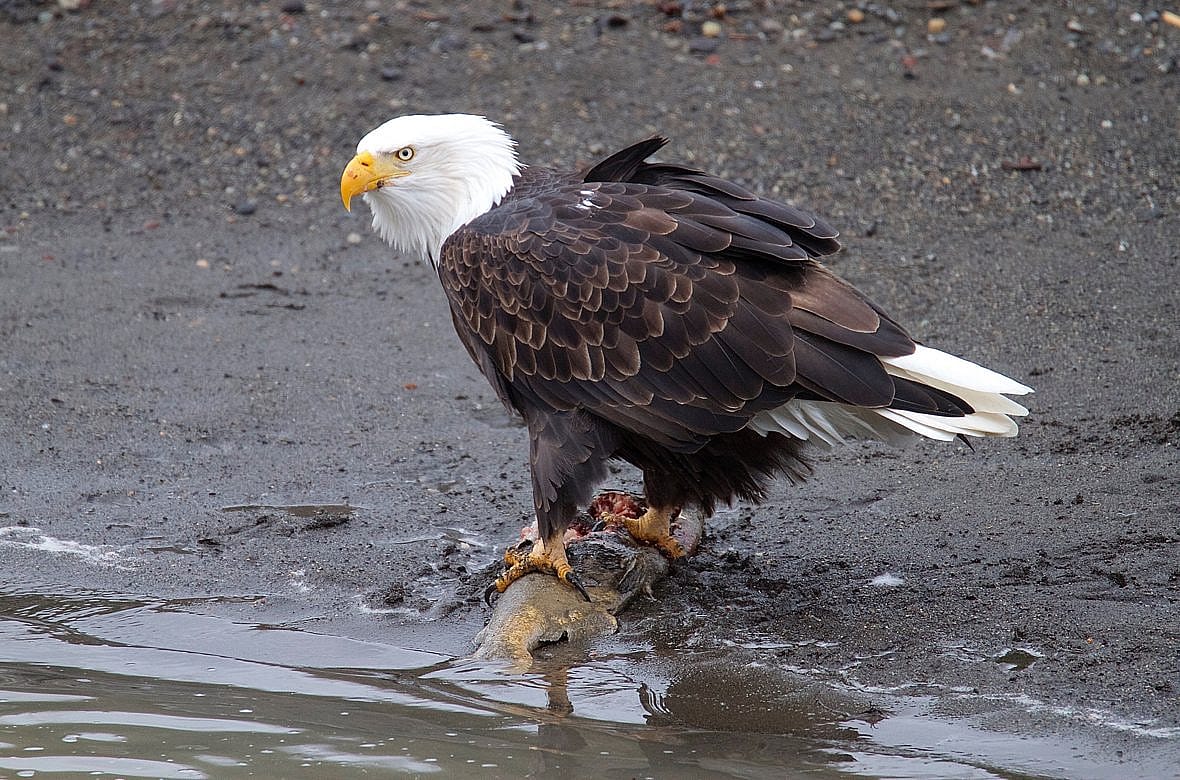
Golden Eagles mainly prey on mammals such as rabbits and hares. They also prey on ground squirrels, prairie dogs, marmots, foxes, and even young deer and antelope. They have been seen pulling sheep off cliffs, then following them to the ground to finish off the kill if necessary. They will also eat reptiles, tortoises, and medium-sized birds. Like Bald Eagles, they consume a large amount of carrion. Golden Eagles are also kleptoparasites, though not as commonly as Bald Eagles. Goldens regularly hang around large prairie dog towns, where both Bald and Goldens rob hawks of their prey. Sometimes the Golden will even steal from a Bald Eagle. Below is a video of a Golden Eagle hunting for prey.
Golden and Bald eagles are majestic, large birds, that are revered by many people. Though these eagles are different in many ways, they also have overlapping similarities, and will always fascinate the public that see them in the wild, or in an education program such as the Draper Museum Raptor Experience.
Photo Credits
Photo of two bald eagles in a white pine by author, Anne Hay
Adult Bald Eagle © Pen Waggener, Attribution 2,0 Generic License
The Golden Head and Nape of a Golden Eagle © Jon Nelson/Flickr
Immature golden in flight by Sergey Yelseev, Attribution, NonCommercial, NoDerivatives License
Immature Bald Eagle © Jerry McFarland, Attribution-NonCommercial 2.0 Generic Deed
Photo of dollar bill, © Christine B Castro /flickr, Attribution-NonCommercial 2.0 Generic
Photo of our golden eagle, Kateri, courtesy of the Draper Museum Raptor Experience
Photos of our bald eagle, Jade, through the year, are from our Draper Museum Raptor Experience staff
The golden eagle nest within a cliff opening courtesy © Anne Hay
Bald eagle with eaglet in a tree nest © Tim Lumley, Attribution, NonCommercial, NoDerivatives Licens
Bald eagle with fish © Jerry McFarland, Attribution, Non Commercial License
Golden eagle on carrion along with magpies and raven © Jon Nelson, Attribution License
Written By
Anne Hay
Anne Hay has a Bachelor's degree in Elementary Education and a Master's in Computers in Education. She spent most of her working years teaching third grade at Livingston School in Cody, Wyoming. After retiring she began doing a variety of volunteer work for the Buffalo Bill Center of the West’s Draper Natural History Museum. Anne loves nature and has a concern for the environment. She believes that educating the public, so that they will have a better understanding and appreciation for the natural world, is very important. Because of this belief, volunteering at the Center is a perfect fit. She spends time in the Draper Lab, observing eagle nests for Dr. Charles Preston’s long-term research project on nesting golden eagles, writing observation reports of raptor sightings in the Bighorn Basin, and working with the Draper Museum Raptor Experience. Anne states that, “Having a bird on my glove, is one of my all time favorite things in life.”
